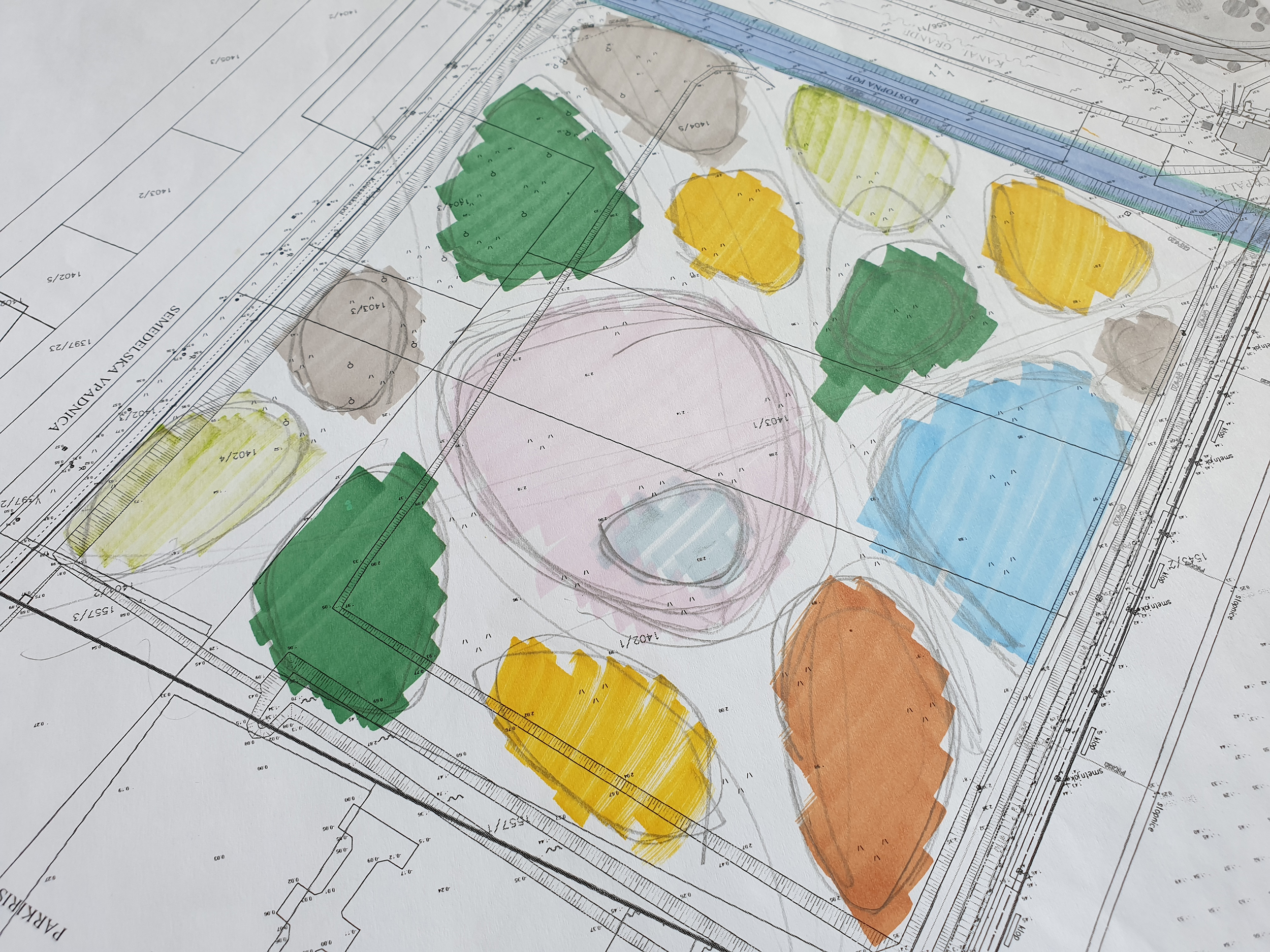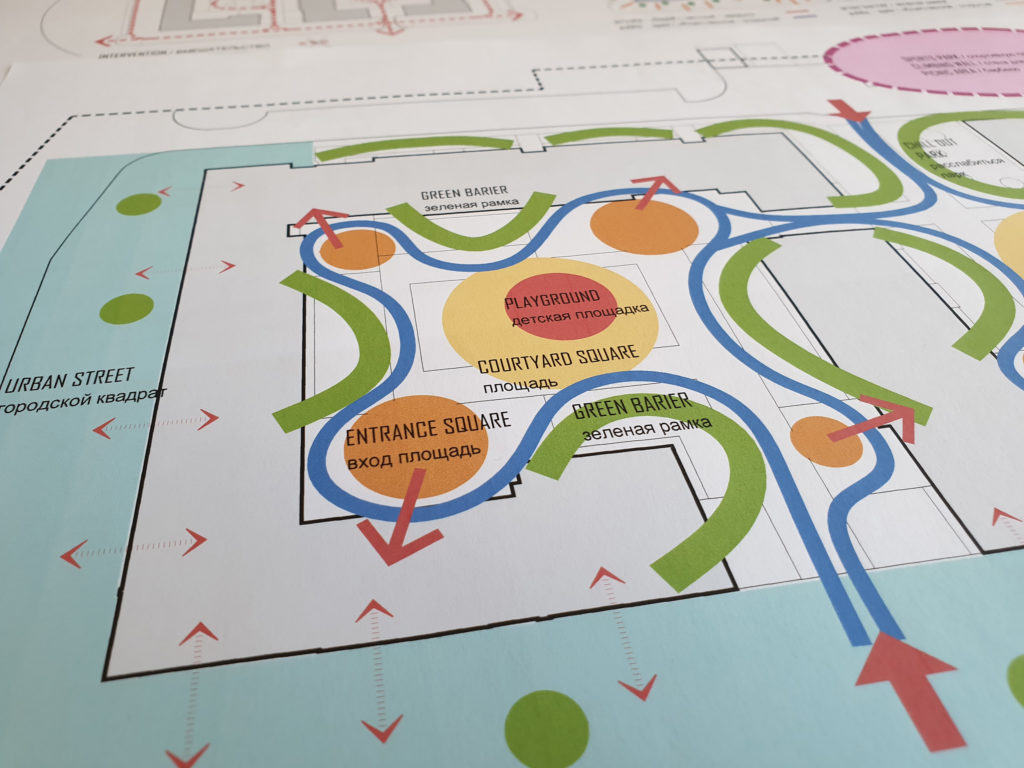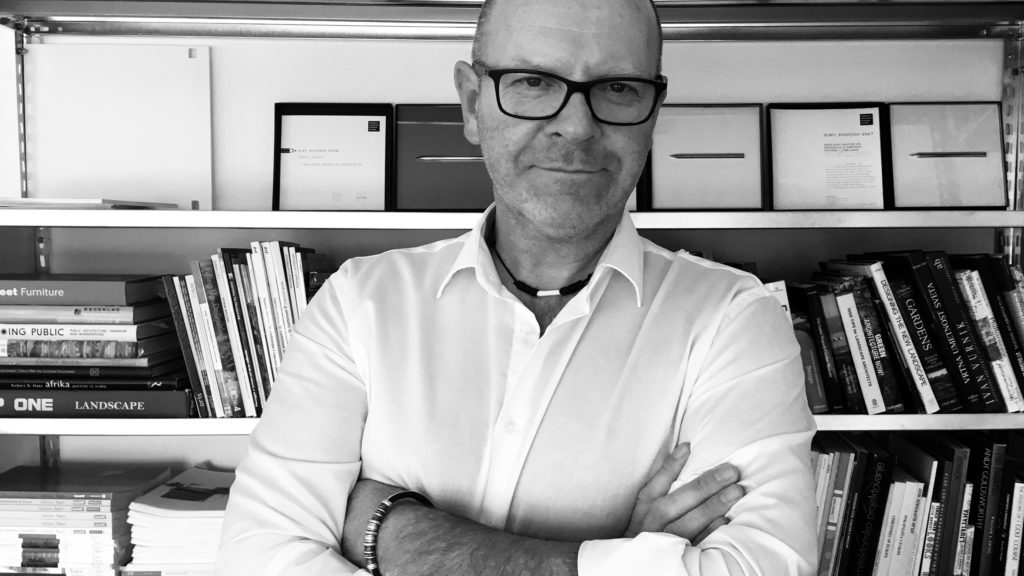Multidisciplinarity
Matej Kučina, the academic study programme in Landscape Architecture was founded in 1976 at the Biotechnical Faculty by Professor Ogrin. You were the third generation of graduates and you are a kind of pioneer of this profession in Slovenia. How do you see the development of this profession over the 25 years of your activity?
The development of landscape architecture has been influenced by increased concern for the environment and nature, as well as urban and open space problems. Additional impetus to the development was given by the legislation of our profession, which succeeded in demanding obligatory requirements for landscape architecture planning.
Finally, an awareness of the general public regarding the importance of space has also helped to establish our profession. In recent years, however, we have witnessed stronger cooperation between related professions, especially with architects. The same applies for spatial planners, builders, traffic and other professionals.
What does the landscape architect bring to the cultural and natural landscape when we consider it as our living space?
Landscape architecture deals with nature itself, with the existence of human being’s in cities and space and with the design of natural or urban spaces. I can say that we, landscape architects, have a wide range of natural and technical skills required for our work. Therefore, we have a more complex view of space, we may have a better understanding of nature, as well as the importance of sustainability, ecological issues and, ultimately, the problems of global warming.
How do you see Bruto and yourself as the bureau’s Spiritus Agens in the development of landscape architecture?
Bruto is involved in spatial design. We are mainly engaged in tasks of a very formative character. The bureau and the wider team, is also engaged in spatial planning, together with external partners, experts in certain fields. Both myself and Bruto are always exited by the design of space, be it a park, a square, a garden, a cemetery, a playground, a parking lot or a highway; thus typologically very diverse areas, but each type of task or area requires its own approach.
Your website lists eight principles of spatial design…
These are not design principles, rather tools or modes that help us in the design process.
But can we understand them as a manifest of the Bruto bureau?
Yes, you can.
And yet?
These methods or modes are a tool through which we come up with a conceptual solution. Analysis has shown that our best projects are those where we have used several methods at the same time.
Energy

What is a good solution?
In my opinion, a good solution is the one that brings added value in a spatial or experiential sense. This means we analysed the space well, detected the problems, and presented a good design. A good solution is the one that represents quality of design and space. It is the one that generates change, a change in the perception and the use of space that people adopt, or on other hand, a change in favour of natural processes and habitats. Our goal is always to make a good project, with added value; one that is durable, respectful of space and that serves the user.
When does a good solution happen?
A good solution is always the result of complex planning. The analysis of space, good concept and design, where all the necessary experts are involved. We create a team of experts for each individual project. Depending on the kind of project. Very often we work together with different architectural bureaus, as many tasks show an inseparable link between object and space.
The landscape architect also designs unpredictable parameters …
In principle, we do, but not necessarily. It depends on the number of natural elements in the design object. It is true, however, that we design an outdoor space, which is subject to weather conditions and is therefore partly changing. Being banal, it is necessary to mow the grass, the trees grow, when you plant a five-meter high tree, it will reach twenty meters in ten years …
From the very beginning it is necessary to keep in mind how it will be maintained, how it will develop, how it will grow. Of course, the maintenance costs also matter a lot. We may not be classic landscape architects in this respect. To us, nature or space is a canvas that we create with different elements. They may be natural elements, or not. It is more important to find the right materials or elements to allow us express our idea.
And how do you control the space while undergoing so many changes?
At the Faculty of Architecture, with Professor Aleš Vodopivec, I gave a lecture to his students and I drew one insanely beautiful graph, proving the thesis that the state of landscape architecture depends on energy input. The more energy you bring in, the more you keep the space the same. You bring in energy by mowing grass, pruning, fertilizing greens, …
The ultimate example of a groomed landscape with enormous energy input is the Baroque park, for example Versailles. There they trimmed the treetops with 20-meter high ladders to make them flat as a wall! Why? Landscape architect of the French King Louis XIV, Le Nôtre, embodied in the design of the park, the king’s idea of the almighty control of man over nature. Which certainly was not a utopian idea, but to subjugate it, he needed an army of workers and a lot of energy in the form of labour input.
Otherwise, if you do nothing, the most flexible plants, the most aggressive ones, will overgrow the space. A good example is the Plečnik stadium.
Can a man master the nature at all or does he have to humbly acknowledge its absolute power?
Actually, this is not a dilemma for us, but like all landscape architects, it is a challenge and a matter of approach. In our bureau, the grass and the tree are not necessarily the basic elements of a solution!
Is Čufar Square an example of that?
Well, this is a square, not a park, because the definition of a square is that it is a larger, predominantly paved urban area, but it does not have to have greenery and trees. In our bureau, we do not submit to any definition, we rather play with them and often re-define them. I could call it walking on the edge.
Complexity

Why did you decide to study landscape architecture?
I’m a very natural person at heart, I love nature. I went to a secondary forestry school, which gave me a certain knowledge but it did not fulfil me in a creative sense. This potential was later awakened in me and I can realize it in landscape architecture. And the bureau makes it possible.
How would you describe your bureau in just three words?
(long pause) Outstanding – we are always doing more than is absolutely necessary. Quality and weighted, value-added solutions. Serious professional multidisciplinary work.
This is expected of every good bureau.
What would impress you?
Uniqueness, originality.
Yes, definitely originality.
What would convince me most of all is if the bureau is run by a person with strong design expression and vision.
True, I am a man with a strong design expression or design poetics, this is probably the main difference between our bureau and the others. We are more daring, we are more creative, we want to give a certain impact to the space, we are not only dealing with the planting of flowers, we are still more in the idea of Louis XIV, if you get my joke.
Speaking of our originality, it is not only school-based, but is acquired through a broader, interdisciplinary spectrum of knowledge that I draw from many different fields. Imagine a large cloud of information and knowledge that I pass through three sieves: space, space analysis and client project assignment. I combine this filtered information, ideas and feelings into a concept, and through one or more of the eight modes, I formulate it into conceptual design.
How do you fill that cloud?
In some ways, I am determined by the Gemini awareness, one who is interested in everything in this world. With childlike curiosity, and within all, especially film, music, visual art, nature, architecture, design and social networks.
Can we summarize your language, your narrative?
Originality, clarity, legibility, abstractness.
Our design language is very clear, with a clearly defined concept. You could say that our designs are attractive, but at the same time conceptually clear and programmatic.
We can simplify things so that they are readable in orientation, usability. Formally simple solutions, which are complex at the same time, allow different use of space and possibilities for development. Simplicity in design, multifunctionality in program – that’s it.
Which solutions would you sign again?
Maister Park, Bled Castle Park, Velika Polana Park… – we had a very good relationship with these clients, quite free hands and playfulness of design… and when I evaluated them as a result of my method, I recognized most of our tools in them … Bled Castle Park is considered as an example of good practice, despite the fact of being a reconstruction and therefore it was difficult to talk about freedom of choice, still we were able to express our ideas and the result is excellent.
Interesting. Are all solutions parks and public commissions?
For me, a park is the ultimate project… Since it is a public space, intended for the general public, which is a bigger challenge for me, with more democratic program contents, where you have to take into account more people, content, requirements, etc. The private garden is often just an exhibition.
Why can your client trust you, why do they choose the Bruto bureau?
The client can choose Bruto for a number of reasons: our experience, our professionalism, as evidenced by both awards and recognition of the profession. But I would like them to choose us for our working principles and our poetics. I dare to claim we have not received a single contract simply due to awards.
Originality

You added a blooming meadow to the reconstruction of Bled Castle Park. Why?
True, this flowering lawn is our intervention in an otherwise strictly controlled, delimited, structured area of the park that probably used to be maintained by frequent grass mowing. The idea of a flowering park is sustainable design, as it looks more natural. In this case, it’s not a matter of ecology, but a passage between the formed park and the edge of the forest that almost entirely surrounds the park.
What has shaped you most in your work?
Learning from own mistakes and own experience. I was plowing my way, I have to fight for my business, and hence my attitude to deliver 110%.
Your trademark, your signature in many projects is a wooden bench.
On one hand the reason lies in aesthetics and on the other in economics. However, because of the situation in our country, we operate in a guerrilla way. In investments we usually run out of funds for urban equipment, which is very expensive … our bench costs 300 euros.
What inspires you?
Above all, nature itself, its beauty, changing, natural processes of growth, dying and regeneration … and my muse of course, which gives me energy, passion and inspiration.
Last question, what does beauty mean to you?
The most difficult question…
That’s why it’s the last. Do your projects bring beauty to the observer?
Yes, our projects bring beauty on a visual level because they are visually attractive. The beauty, not as in a poem, but in our work, is the visual coherence, the composition of elements that have an internal relationship, which may not necessarily be symmetry or otherwise organized order. Yes, coherence within the observed, an absolute in itself.
Now, really, the last question: what would you become if you were not a landscape architect?
Sculptor. In my opinion, this preference for 3D design is quite noticeable in our projects.
Your next dream project?
An underground park. Not under the ground, but topographically below ground level, a dug-in park! And I must admit to have more bizarre ideas, for example a garden with gnomes and artificial flowers as an installation!
So, are you looking for a client or finances?
Yes, financing is definitely necessary.
What will you tell the next customer? What else would you say to someone who read this interview all the way through and spent more than four minutes on it?
Space is much more than what they can see with their own eyes.
Interviewed by Taja Legat Lokar, May 2020

